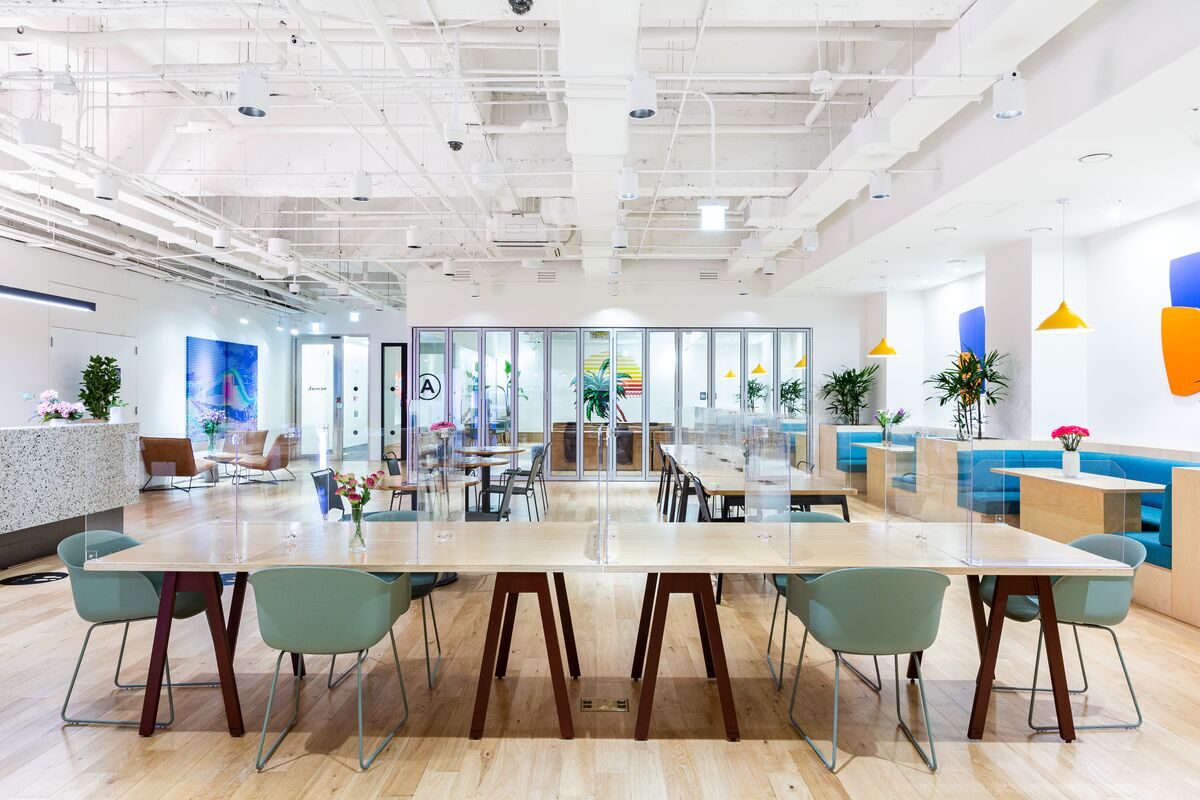When the pilot program for WeWork On Demand launched in August 2020, there wasn’t a big-budget rollout. There wasn’t a paid social campaign or inescapable targeted ads. The WeWork On Demand team simply chose 12 buildings throughout New York City for the launch—a quiet trial run for a product they’d long speculated would be a hit.
“Before COVID-19, the idea of flexible workspace was definitely something we were taking some bets on,” says Caitlin O’Connor, senior manager, product management at WeWork. “We knew the market was moving toward that—but we didn’t know how much COVID-19 would amplify it.”
Soon after the launch, the team realized their bets paid off. The number of people using WeWork On Demand rose steadily each week. And the lack of paid marketing meant the product was growing organically—people were learning about it through their networks.
“WeWork On Demand is the right product at the right time,” says Bart Clareman, director of product management, the business owner of the product. “During the pandemic, people found that there were parts about working from home that they really liked and parts about the office that they really missed. You had companies and individuals starting to look for how to take from the best of both worlds. A major need was created, and we met that need.”
Choosing how, when, and where to work
WeWork On Demand is a pay-as-you-go service that allows users to book desks and meeting rooms in more than 330 WeWork locations through the WeWork app (think: Uber for workspaces). Users do not need to sign up for a monthly membership or a long-term lease, and they can access WeWork spaces as often as they choose. Whether you need a quiet place to take an unexpected meeting with a client or desire a change of scenery from your workstation at home, WeWork On Demand gives you the flexibility to decide how, when, and where you work.
WeWork On Demand is the right product at the right time.
Bart Clareman, director of product management
“With On Demand, you don’t have to make a final decision about whether you and your team are ready for a full return to work,” says Clareman. “You can just use this product for today and decide if you’re comfortable. If you are and you want to keep using WeWork in a pay-as-you-go fashion, great, On Demand is here for you. Alternatively, maybe you decide you’re ready to make it official with WeWork All Access or a dedicated desk.”
The feedback that the team received from the initial pilots was overwhelmingly positive. During a time when everything felt unpredictable, people enjoyed both the flexibility of the pay-as-you-go model and the reliability and premium member experience that WeWork is known for. Over the past 12 months, the Net Promoter Score for WeWork On Demand has been over 50, placing it in the upper echelon of customer satisfaction.
The right idea at the right time
The idea for WeWork On Demand came directly from WeWork members and prospective members themselves. Community managers at WeWork locations around the world kept noticing that people would walk into WeWork offices looking for a space to work for the day. At the time, the only people who could utilize WeWork spaces were those with a monthly membership or a long-term lease, which meant these potential members were turned away.
“I was actually one of those walk-ins some time back,” says Bryan Gallacher, director of technical program management, who’s part of the WeWork On Demand team. “I walked into a midtown WeWork and asked if they had daily desks.” At the time, Gallacher was turned away.
Fast-forward to today, and WeWork On Demand is now available in dozens of U.S. cities and 14 countries. In 2021, WeWork On Demand expanded internationally to the UK, Ireland, Singapore, Canada, and Australia. Earlier this year, the team expanded the product to even more European countries, including France, Spain, Germany, Italy, Belgium, Sweden, Czech Republic, and Poland.
With the expansions, the team had to figure out how to make WeWork On Demand seamless. “We have to really think about this product as a global product. It’s no longer New York–centric,” says O’Connor. “We’re thinking about things the way someone would who’s looking at the product in Houston—there’s driving distance, they need parking information.”
Victoria Almazovaite, product operations manager, manages the internationalization of products at WeWork, including WeWork On Demand. Working with a global team is “probably one of the favorite parts of my job,” she says. But managing projects across time zones is not without its challenges.
“I encourage asynchronous communication methods and make sure there is a single source of truth for the project status quo. This helps to accelerate workflows,” she says. “In addition, we also try to find a time to meet once a week to focus on solving challenges as a team,” she adds.
Citing Uber as an example, Clareman says that what makes the ride-sharing platform so successful is that users can expect it to function the same no matter what city they’re in. As WeWork On Demand expands globally, the team aims to create that same reliability and accessibility. Making a product that functions just as flawlessly in Houston, Texas, as it does in Dublin, Ireland, is no small task. But the team’s international makeup might be the secret to the product’s global success.
“We all work great as a team,” Gallacher says. “Our time zone differences are an asset to our product. Having our core team in these different time zones only helps us better deal with issues, escalations, and communication with our stakeholders and global On Demand members.”
J. Agrelo is a freelance journalist in Chicago. His work has appeared in The Washington Post, Mother Jones magazine, and Slate. You can find him on Twitter at @JstnAgrlo.
Rethinking your workspace?










